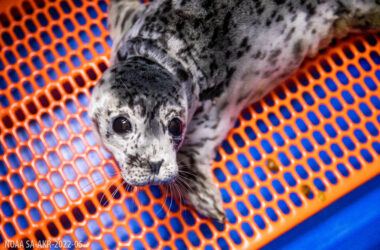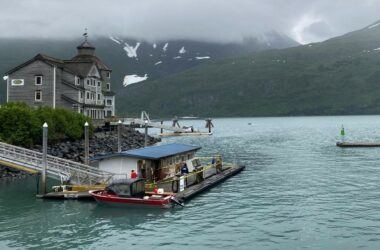JUNEAU, AK – The Alaska Seafood Marketing Institute (ASMI) announced on Tuesday, Feb. 20 that the U.S Department of Agriculture recently released bids for more than 1.4 million cases of canned Alaska pink salmon, three hundred thousand cases of canned Alaska sockeye salmon and 15 million pounds of Alaska pollock fish sticks and fillets.
Each case of salmon consists of 24 cans, regardless of size. All of the pink salmon will be in “tall” cans that contain 14.75 oz. and the sockeye salmon will be split between the 14.75 oz. “talls” and the smaller 7.5 oz. “halves”. This could be a boon for the Alaska seafood industry–which just saw three major seafood processing plants shut down permanently or close for the upcoming fishing season–and food-insecure Americans nationwide.
These salmon and pollock products will be sourced in the U.S. from Alaska’s sustainably managed fisheries. The purchase could also serve as a big boost for Alaskan fishermen, processors, and communities who have faced challenging market conditions in 2023.
At the request of the seafood industry, ASMI initiated requests of the Secretary of Agriculture for assistance under Section 32 of the Agricultural Adjustment Act of 1935. This program assists U.S. agricultural food markets by purchasing commodities to relieve market surpluses. Bruce Schactler, ASMI’s Global Food Aid Program Director, worked closely with USDA, industry, and the Alaska delegation in Washington, D.C. throughout the process, which relies on an economic review of the sector to gauge need.
Senator Lisa Murkowski, Senator Dan Sullivan, and Representative Mary Peltola were instrumental in supporting the requests and securing approval from the Secretary of Agriculture, the arbiter of the program.
ASMI and the Alaska seafood harvesters, processors, and industry appreciate the USDA’s partnership to support the Alaska seafood industry while providing products with exceptional nutrition to consumers nationwide. ASMI encourages USDA to continue to expand access to high-quality, health-promoting, sustainable wild Alaska Seafood for its program participants and align their offerings with dietary guidelines that recommend two servings of seafood per week for all Americans, starting at one year of age






